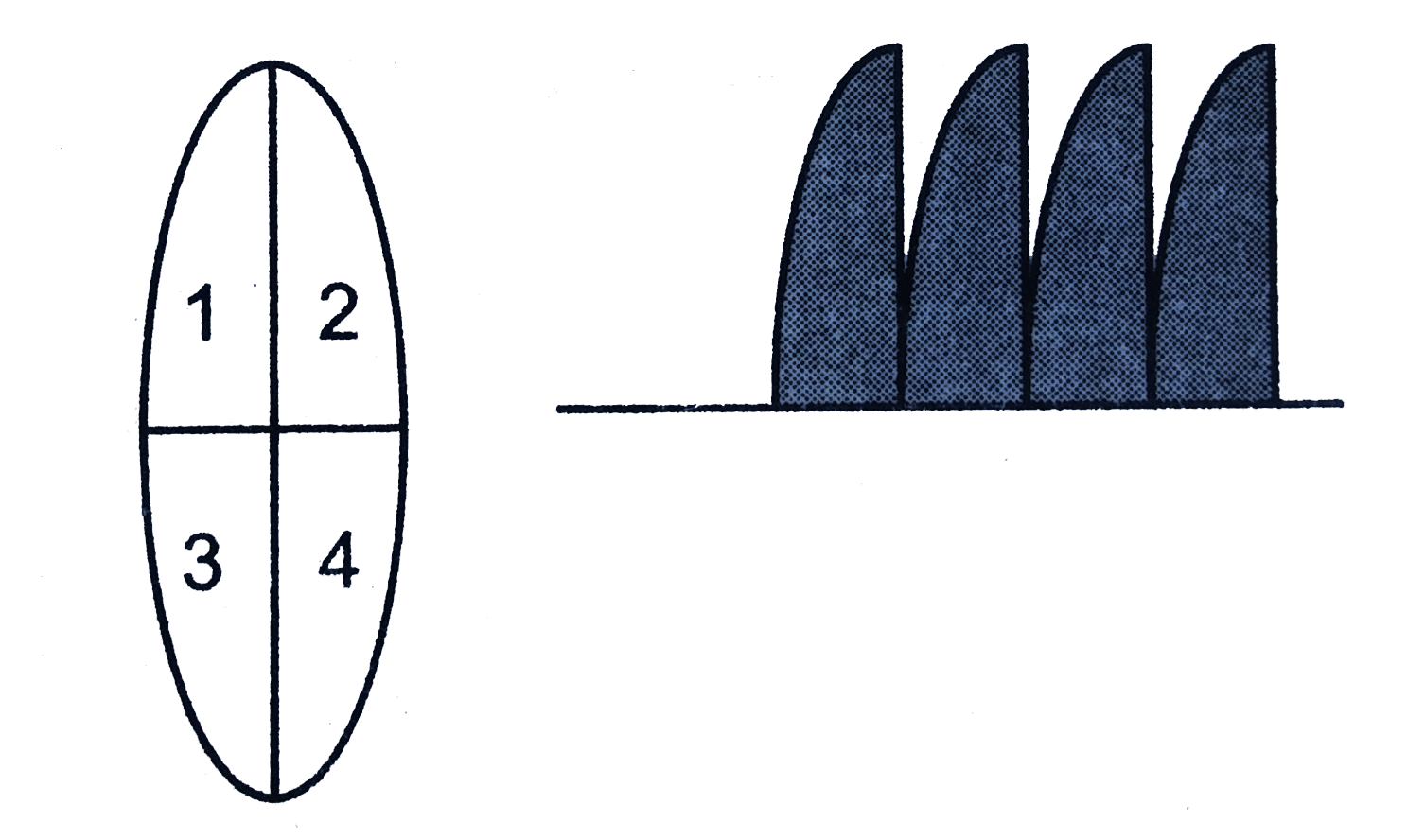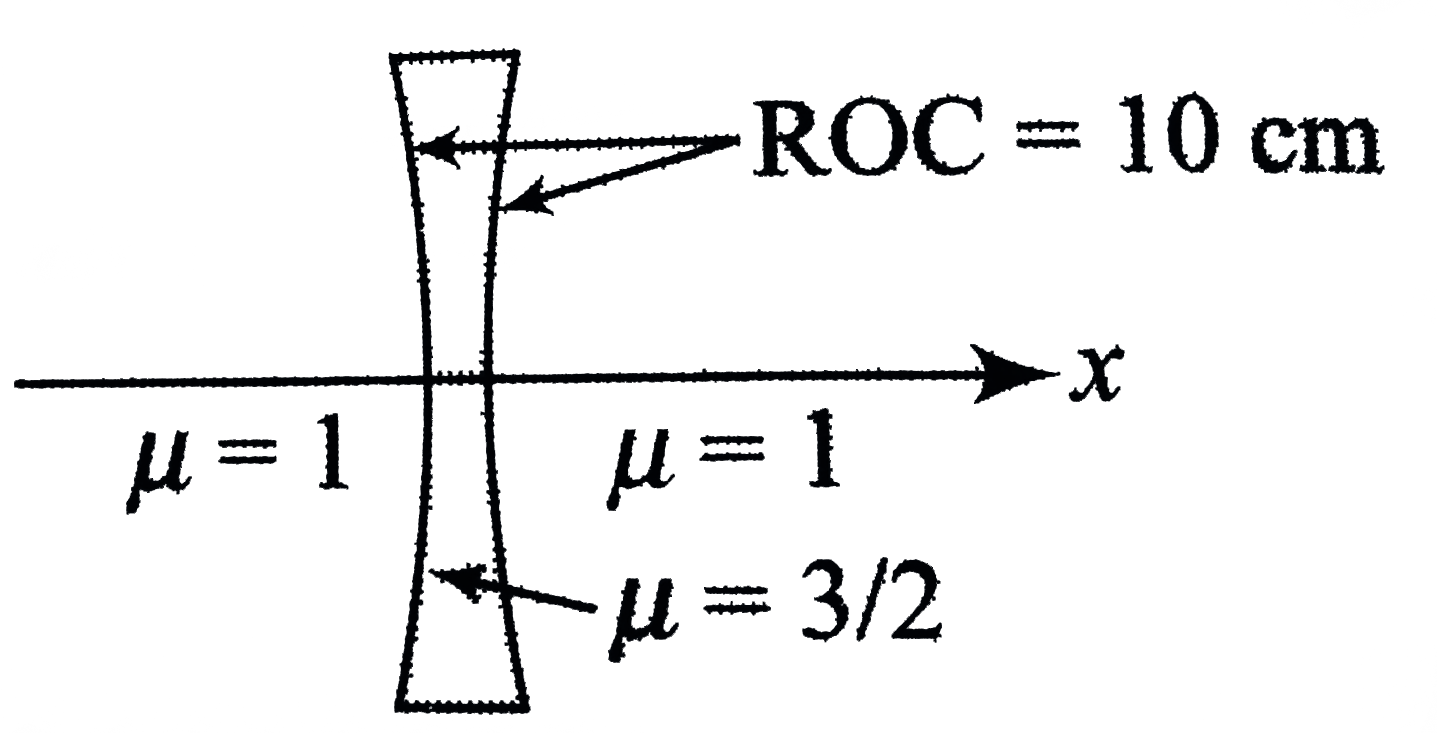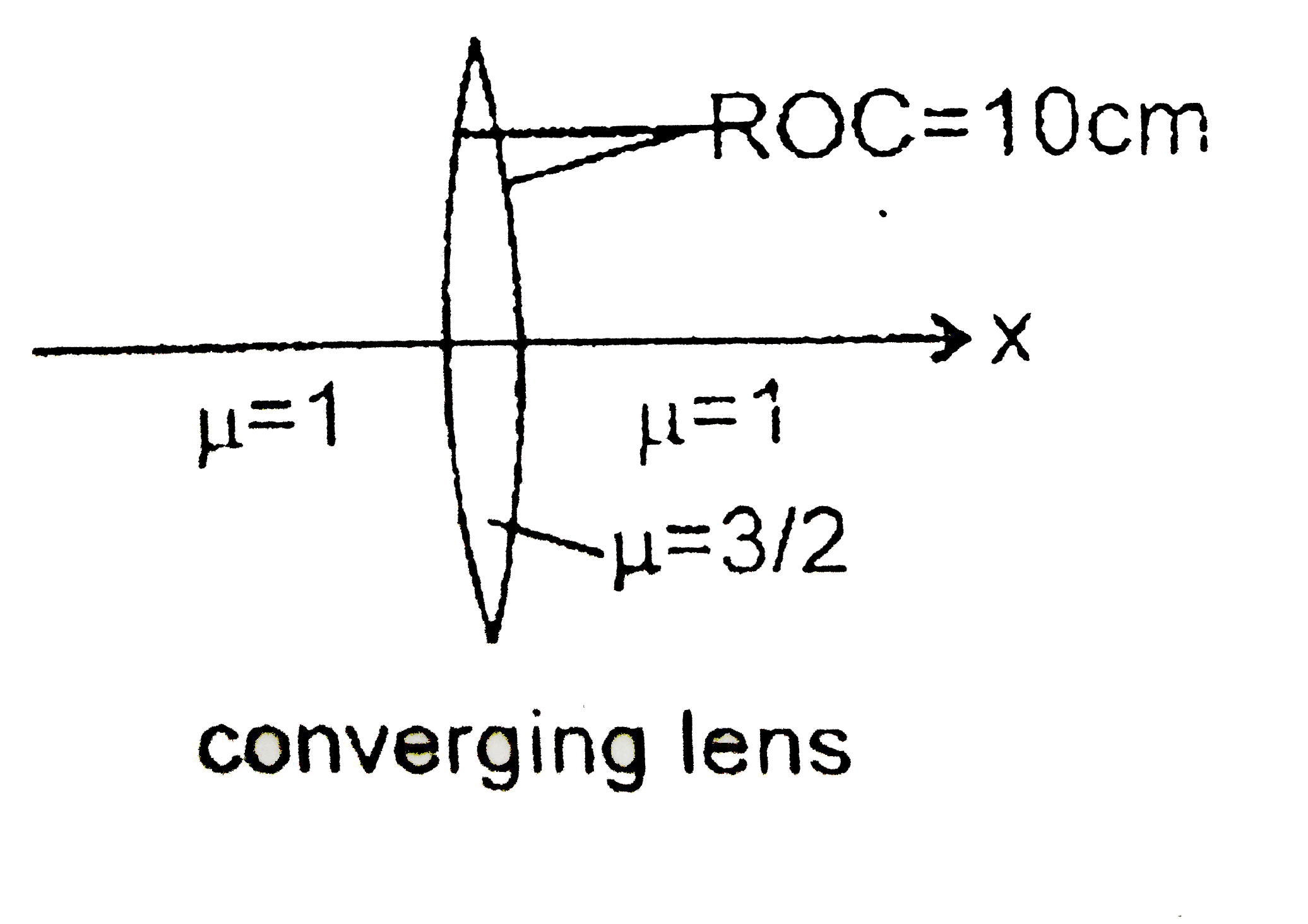The given lens is broken into four parts rearranged as shown. If the initial focal length is f, then after rearrangement the equivalent focal length is

A
f
B
C
D
Video Solution
Text Solution
The correct Answer is:b.
Cutting a lens in transverse direction double their focal length, i.e., 2f.
Using the formula of equivalent focal length,
We get equivalent focal length as .
|
Topper's Solved these Questions
- GEOMETRICAL OPTICSBOOK - CENGAGE PHYSICSCHAPTER - GEOMETRICAL OPTICSEXERCISE - Assertion-Reasoninig
2 Videos
- GEOMETRICAL OPTICSBOOK - CENGAGE PHYSICSCHAPTER - GEOMETRICAL OPTICSEXERCISE - Linked Comprehension
51 Videos
- GEOMETRICAL OPTICSBOOK - CENGAGE PHYSICSCHAPTER - GEOMETRICAL OPTICSEXERCISE - Subjective
26 Videos
- FRICTIONBOOK - CENGAGE PHYSICSCHAPTER - FRICTIONEXERCISE - QUESTION BANK
1 Videos
- GRAVITATIONBOOK - CENGAGE PHYSICSCHAPTER - GRAVITATIONEXERCISE - Question Bank
39 Videos
Similar Questions
Knowledge Check
The given equi-convex lens is broken into four parts and rearranged as shown. If the initial focal length is f, then after rearrangement the equivalent focal length is
 AfBf/2Cf/4D4f
AfBf/2Cf/4D4f
The focal length of the convex lens isA+10 cmB+20cmC−10cmD−20cmOn grinding a lens, its focal length
AincreasesBdecreasesCremains sameDnothing can be decided
Find the focal length of the lens shown in Fig.

View SolutionIf f is focal length of the lens, then the power of a lens is equal to
View SolutionA convex lens is in contact with a concave lens. The magnitude of the ration of their focal lengths is 2/3. Their equivalent focal length is 30cm. What are their individual focal lengths?
View SolutionA convex lens is in contact with a concave lens. The magnitude of the ratio of their focal lengths is 23. Their equivalent focal length is 30 cm. What are their individual focal lengths?
View SolutionThe focal length of a lens depends on
View Solution

